The sport of millions. Awkward Cricket Questions
The sport of millions. Awkward Cricket Questions
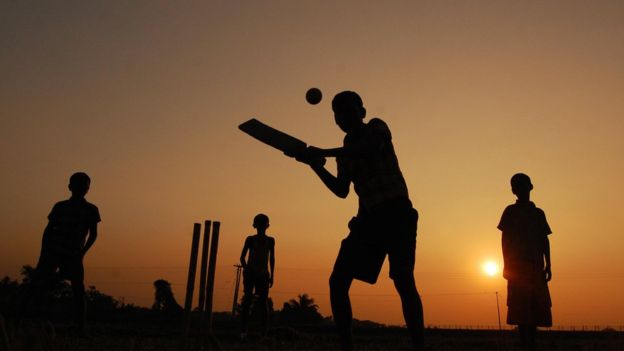 AFPHundreds of millions of people around the world are crazy about cricket. And most of them are indifferent to other sports. Thanks to them, cricket confidently takes the second place in popularity in the world after football and in terms of the number of loyal fans confidently overtakes all other team games - from baseball to hockey.
AFPHundreds of millions of people around the world are crazy about cricket. And most of them are indifferent to other sports. Thanks to them, cricket confidently takes the second place in popularity in the world after football and in terms of the number of loyal fans confidently overtakes all other team games - from baseball to hockey.
And although cricket is almost unknown outside the former British Empire, in countries with a total population of about 2 billion people it is a religion. They heard about Messi and, perhaps, have an idea of who Pele is. But in the hearts of forever - Sachin Tendulkar and Ricky Ponting, and in the Instagram feed - Virat Koli and Joe Ruth.
The captain of the Indian national team, Kohl, confidently presses Bollywood stars at the top of the popularity rating and earns $ 25 million a year, as the best scorer of “Liverpool” Mo Salah.
Ex-captain Sachin in India has a status close to divine. And the former leader of Pakistan’s national team, Imran Khan, now runs the country as prime minister. Australia minted coins with the portrait of the legendary Don Bradman, and the British queen knights the former English captain Alistair Cook.
 GETTY IMAGES
GETTY IMAGES
For the right to broadcast the championship of England, television channels posted a record $ 1.5 billion. Tickets for good seats cost from $ 100, and from hand reach several thousand for an important match.
It seems that there is something in this game, since it captured the hearts of a third of the world's population. For the remaining two-thirds, the BBC Russian Service tried to answer a few awkward questions about cricket.
Is cricket and croquet different things?
Croquet is played mainly by pensioners at their leisure, pounding balls into the collars with wooden hammers. Like the Queen’s lawn in Alice in Wonderland by Lewis Carroll.
In cricket, teams fight in stadiums in front of tens of thousands of spectators. (About the rules, see below.)
 AFP
AFP
A cricket bat is one and a half times more weighty than a baseball. A ball thrown by a pro flies at a speed of 150 km / h, and a world-class player is able to beat him a hundred meters away. This is a serious sport, it requires protective equipment, first-class refereeing and comprehensive training.
Roughly speaking, croquet is a poor relative of golf. Cricket is the older brother of baseball.
Do they really play all day?
Only if it's a short match. Normal - the so-called test, the test - lasts five days: six hours a day with a lunch break for 40 minutes and two tea parties for 20 minutes.
 GETTY IMAGES
GETTY IMAGES
The classic series of five test matches, in which two separate teams regularly find out the relationship between themselves, takes up to a month and a half.
This has advantages. At least in the fact that at an amateur level, cricket game goes well with a picnic in the park all day long. And spectators of a professional match are always guaranteed entertainment from morning to evening.
But there are also disadvantages. Firstly, not every fan will find so much free time and understanding in the family. Secondly, not every television channel will risk such volumes of airtime.
Thirdly, sports bars, cafes and pubs prefer to lure visitors with broadcasts of other sports, more dynamic and shorter. Even in India, the English Premier League is gaining popularity.
Fourth, because of the clumsy format, cricket has been left behind the Olympic Games since 1900. And finally, it kills amateur sports - a forge of talents. In small and rural clubs, less and more people are willing to spend every second day off on cricket.
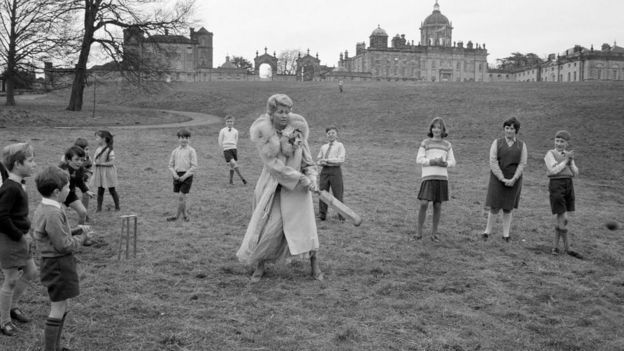 MIRRORPIX / GETTY IMAGES
MIRRORPIX / GETTY IMAGES
Therefore, in recent years, cricket has been trying to shake off a centuries-old slumber and reborn from imposing sports dedicated to a dynamic spectacle for everyone. Instead of five-day tests, teams and clubs are now mostly found in three new one-day formats.
The shortest (the English novelty The Hundred) is limited to a hundred shots of the ball per team and can be compared with the duration of a football match. The most common (T20) - 120 goals each, lasts about three hours. And the serious format of the World Championship (ODI) is 300 goals per team. Such a game usually takes all day.
And why are they all in white, then colorful? And is their ball red or white?
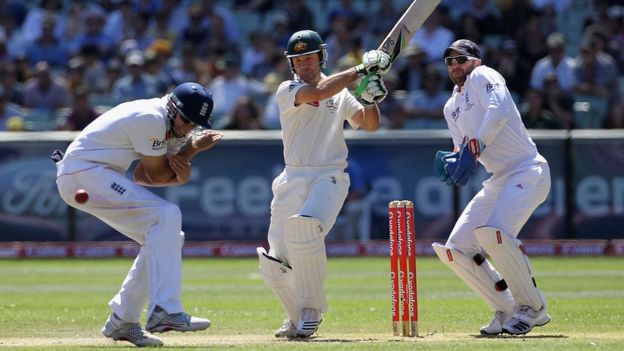 GETTY IMAGES
GETTY IMAGES
Multi-day tests are played in traditional white uniforms. And a red ball. So it has been led from time immemorial.
But one-day matches are already a form of national or club colors, and the ball is white. They refused red, and that's why.
Unlike tests, where at dusk the game just stops to resume the next morning, one-day matches have to be played out. For this, one of the main cricket taboos was removed - on artificial lighting.
A white ball is better seen under the light of searchlights and against the night sky than red.
And what if the rain?
This is not the only problem. There are still bees.
The match is paused during the rain. The field is covered, and special machines pump water from the lawn and its central playing part - a pitch, the preparation of which requires special skills and patience.
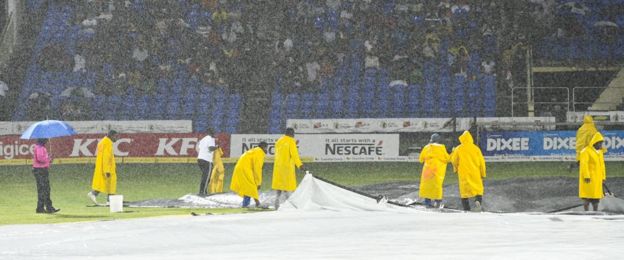 GETTY IMAGES
GETTY IMAGES
In one-day matches, if the rain does not end before the evening, then the game is recognized as inconclusive. But not always: if enough goals were played in the return half of the match, the result is determined by a complex formula developed by the English mathematician Tony Lewis.
She not only extrapolates the points already earned, but also takes into account the behavioral characteristics of one-day cricket, for example, the fact that at the end of the match batsmen are more prone to risky and effective strikes, and bowlers, on the contrary, get tired.
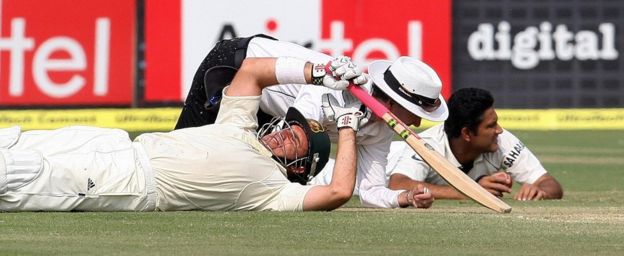 AFP
AFP
Bees are another reason to interrupt the match. The invasion of the swarm on the site is a frequent occurrence. The judges suspend the game, everyone falls on the lawn and does not rise until the bees lose interest and go home.
Five days of the game is an ultramarathon. No strength enough
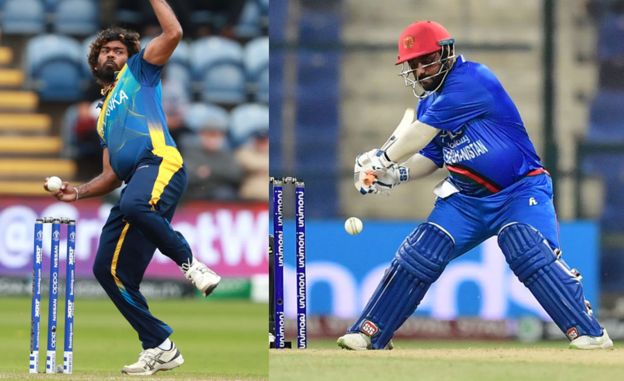 GETTY IMAGES
GETTY IMAGES
Cricket requires serious physical training. But this is not hockey and not football, and in principle it is enough to just be in shape. What makes it accessible to the general public, avoiding a strict diet and exhausting workouts.
And even professionals are no exception. What was proved by the last world championship, where both Sri Lankan Lasit Malinga and Afghan Mohammed Shahzad appeared.
Despite the convex deviation from his sports uniform, Malinga is one of the best bowlers in the world, and Shahzad is the most productive batsman of the national team of Afghanistan.
And what is the meaning of the game?
The main rules are very simple. Nuances and exceptions are another matter. It’s difficult to understand everyone even after a month and a half of almost daily matches of the World Cup. But this makes the game only more interesting - almost any meeting gives rise to heated debate.
In the middle of the 19th century, the British even considered banning competitive cricket for reasons of public safety. A rare game then did without massacre and mutilation - and even killings.
 GETTY IMAGES
GETTY IMAGES
If you do not go into subtleties, in general terms, everything looks like this. Two teams of 11 people - like in football. But they attack and defend in turn.
The first part of the game, one team in full force enters the field and attacks the opponent’s goal with a ball (a wicket of three columns with two cylinders at the top). Another releases one by one its batsmen (batsmen). One by one, they defend the gate, beating balls and gaining points. When all 10 defenders are knocked out or the allotted number of shots is exhausted, the teams change places. The one who scored the most points wins.
The highest class of a batsman is to hit the balls so that none of the 11 players of the opponent could catch them. While the bounced ball rolls around the field, the batsman runs between two wickets in the center of the field. For each run (run) give one point. If the ball leaves the field, then you can not run - they will give four points for the rolled out and six points for the outgoing.
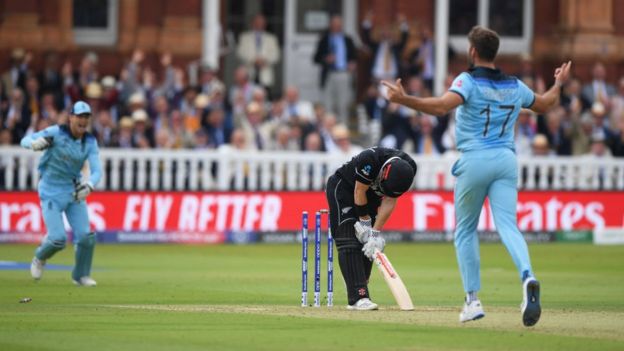 IDI / GETTY IMAGES
IDI / GETTY IMAGES
A batsman's failure is when they knock him out. Three main ways: if the ball directly knocks down the gates; if he flies from the bat into the hands of the enemy without touching the ground; and if the batsman hit the ball and ran, but the opponent picked it up and knocked down the bars before the defender managed to return to the gate.
Milestone for the batsman - 100 points without relegation. By the number of hundreds in their careers, they are placed in the hall of fame of world cricket.
Top batsmen are rarely good at attacking. And vice versa, those who throw balls - bowlers, go out with a bat in the last rows and rarely linger on the field, they are quickly knocked out. But they are the spearhead of attack.
The attacking team of 11 people is placed in a large oval field. Her task is to prevent the batsman from knocking the ball far and earn points.
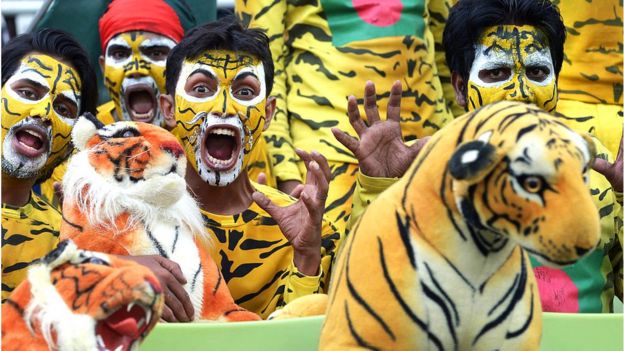 AFP
AFP
A talented bowler is half the battle. The more elaborate or more powerful the throw, the higher the chance to immediately knock down the gate and the harder it is for the batsman to hit the ball aiming, which either spins and bounces unpredictably, or rushes at a speed of 150 km / h.
The other half are field players. They have two main tasks. The first is to catch the ball bouncing off the bat before it touches the ground or flies off the field: this is where the game for the batsman ends. The second - if the batsman managed to hit the ball on the lawn with a blow and started to run, gaining points, you need to pick it up as soon as possible and return it to the gate area to either knock it out or minimize the number of enemy runs.
In the hall of fame bowlers are measured by the number of wickets knocked down from their supply.
If cricket is so popular, why don't I even know what it looks like?
 AFP
AFP
Either you do not like movies, or you watch inattentively.
Cricket was portrayed in thrillers (“The Beach” with Leonardo DiCaprio, “Syrian” with George Clooney and Matt Damon), political dramas (“Frost vs. Nixon”), romantic comedies (“Good Year” by Ridley Scott with Russell Crowe) and even in fairy tales ("The Chronicles of Narnia").
And of course, not a single film about modern India or Pakistan can do without a scene with a game of cricket in a dusty wasteland - so this is a typical picture for those places. This cliche is enjoyed by British filmmakers (Slumdog Millionaire, Marygold Hotel), and Hollywood (Darjeeling Train, Vertical Limit).
The game of gentlemen often appears in English literature - from Dickens to Conan Doyle.
Sir Arthur not only invented Dr. Watson’s past as a cricketer, but also owned the bat himself - it is now stored in the museum of the planet’s main cricket arena, London's Lords Stadium.
 CULTURE CLUB / GETTY IMAGES
CULTURE CLUB / GETTY IMAGES
The creator of Sherlock Holmes was the leader of the writers' team, for which P.G. Woodhouse, who invented Jeeves and Worcester, Alan Milne, who gave the world an unsportsmanlike Winnie the Pooh, Jerome K. Jerome, put three in a boat, not counting a dog, and Rudyard Kipling - a poet, better known to the world for a children's book about Mowgli.
Douglas Adams, who was born after the war, did not play cricket, but he glorified the game in the third part of "The Hitchhiker's Guide to the Galaxy", swirling around cricket. His characters fall out of the spatio-temporal anomaly “onto the perfect lawn of the Lords’ site and become witnesses of atrocities of a galactic scale: robots from the planet Cricket steal the cricket shrine - “Dust.” This requires a separate explanation.
Why is the shrine of cricket considered an urn with ashes?
A small urn with ashes is the most famous trophy of world cricket. Two centuries-old adversaries are fighting for him: the teams of England and Australia.
 GETTY IMAGES
GETTY IMAGES
Australia defeated England for the first time in its stadium in a test match of 1882, and the British press, mourning such a shame, proclaimed the "death of English cricket", followed by cremation and sending the ashes to Australia. Soon after the England team moved, vowing to return the dust to their homeland.
They recouped on the road, and one Australian fan gave the English captain a terracotta perfume bottle the size of a palm.
According to legend, she filled an improvised urn with the ash of burnt bails - two small cylinders connecting three columns of the gate. When the gate is knocked down, the bails cheerfully scatter in different directions, and the batsman wanders down the field to the pavilion, like a goalkeeper who missed the decisive penalty.
Since then, a series of test matches between Australia and England have been called The Ashes. The next one will begin on August 1 and will last until mid-September. The British, inspired by the victory at the World Cup, hope that their native walls will help them return this trophy.
The winner is considered the owner of the “Dust”, although the urn itself is always kept in the cricket temple - the London Lords Museum. So the alien robots Adams did not have to wander around the Earth in search of treasure.
No comments